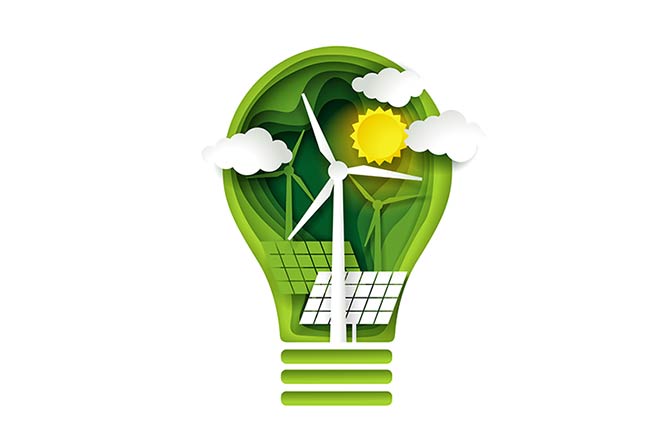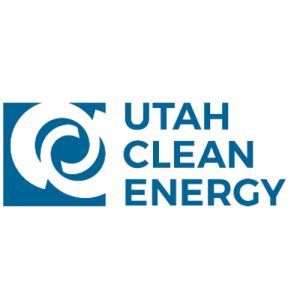Homes account for about 20% of greenhouse gas emissions — and much of that is controlled by how energy efficient they are and what kind of appliances we use. In addition to the climate impact, natural gas combustion also contributes to poor outdoor and indoor air quality. Transitioning towards energy-efficient, all-electric homes tackles both of these problems. Thankfully, all-electric appliances like air-source heat pumps and electric cooktops are taking off across the country.
Utah’s Historical Context
A century ago, when cooking and heating were done with coal and wood, air quality conditions in Utah were atrocious. A study in the 1919-1920 winter heating season placed clay jars around the city to measure soot fall. The clay jars measured 300-1000 tons of soot per square mile fell from the atmosphere — literally air you could chew. Natural gas, which is more accurately known as “methane gas” since it is 95% methane, was introduced in Salt Lake City in 1930 and was thought of as a “cure-all” to the air pollution challenges of those days. Initially, it was expensive to build out the gas distribution network, and adoption was limited to affluent early adopters. There was resistance from coal companies who provided coal to homes and businesses, but by the 1990s, residential coal consumption had virtually disappeared. Thus, the coal-to-natural gas energy transition took about 60 years and led to a dramatic reduction in air pollution and improvements in quality of life. Today we’re in the next phase of building energy transition. As we move from gas to efficient all-electric-buildings, Utah will see improved air quality and truly sustainable communities.
What is All-Electric and Why is it Better?
It comes down to how you cool and heat your house, heat your water and cook your food. Electric homes opt for efficient electric heat pumps instead of gas-powered appliances like a furnace or gas water heater. They also use electric stoves instead of their gas counterparts. There’s been a lot of talk lately about gas stoves. You hear how gas stoves are toxic or that a U.S. federal agency is planning a nationwide ban on gas stoves. So, which is it? Is your gas stove killing you or is the controversy a tempest in a teapot? Let’s dig in.
It is a proven fact that having a gas stove in your house poses a health risk by creating indoor air pollution. The impact gas stoves have on childhood asthma development is similar to a child being exposed to secondhand smoke.
Gas stoves produce two kinds of indoor air pollution. First, your gas stove is burning gas and that combustion produces NOx pollution in your kitchen, which can far exceed air quality standards. Second, gas stoves leak gas, even when they’re turned off. We can’t forget that gas is 95% methane, which is a potent greenhouse gas that is severely hurting our climate. But it’s actually that other 5% that is a health risk in your home. A recent study found 296 unique Volatile Organic Compounds (VOCs) in residential natural gas. If the word “volatile” didn’t make it clear, this includes 21 known hazardous air pollutants like benzene, hexane, toluene, and more.
Although gas stoves have been recognized among air quality researchers as a health risk similar to secondhand smoking, nobody had calculated how many people are affected by it. Until now. A recent paper found that 12.7% of childhood asthma cases are associated with gas stove use. In the Intermountain West, we have slightly lower than average gas stove usage, so we’re likely closer to 10% of childhood asthma cases. Unfortunately, the number of homes with gas stoves has been climbing. From 2009 to 2020, there was a ~10% increase in gas stove use. It’s likely we’re increasing the amount of childhood asthma caused by gas stove usage.
The size of a kitchen and how a stove is used (frequency, ventilation, etc.) factor into the level of risk posed by a gas stove. The health profile of those in the home is also important — children, older adults and those with existing respiratory conditions are at the highest risk for poor outcomes associated with indoor pollution.
Those ready to ditch gas are in luck because there’s never been a better time! New induction stoves are more powerful and precise than gas stoves and are cost-competitive. They’re also easy to clean, don’t pollute indoor air, and don’t pump excess heat into your kitchen. Additionally, the Inflation Reduction Act has allocated millions of dollars in funding to states to provide rebates for energy-efficient electric appliances — including induction cooktops or ranges — to low- and moderate-income households. We are waiting for these rebate programs to be set up, but you can click the link below to calculate an initial estimate of how much you may be eligible for.
https://www.rewiringamerica.org/app/ira‑calculator
While gas stoves have received a lot of attention because of their impacts on indoor air quality, they only account for 1.6% of residential natural gas consumption. The biggest residential gas hogs are space heating and water heating, accounting for 68% and 30% of gas usage, respectively. In fact, Utah has the highest percentage of homes heated primarily with natural gas of any state in the country (77% in 2021). A major challenge with all of that gas usage is that our natural gas extraction and distribution system has major leaks. Methane emissions are a potent greenhouse gas, being 83 times more potent than carbon dioxide over 20 years. A recent study of the Uinta Basin found that 6-8% of the gas produced is wasted through leaks in the gas production infrastructure, some of the highest observed leakage rates anywhere in the world. In addition to emissions from using gas in homes, upstream gas leakage from the gas used for residential space and water heating emits the same amount of pollution as nearly 1.5 million cars!
The bottom line is we have excellent, cost-competitive, all-electric options that don’t pollute indoor air and are a critical climate solution.
All-Electric New Homes are Cost-Competitive with Homes Built to Use Gas
Air quality is a constant issue on our minds, and so is home affordability. Eliminating gas combustion from our homes and buildings is an important part of the puzzle to both reduce local air emissions and save homeowners money. However, most Utahns don’t know what all-electric technologies are, or that they are affordable and available today.
New reports show that making the switch to all-electric technologies is a win for our wallets and health.
A recent study from E3, “The Economics of All-Electric New Construction in Utah,” compared homes built with appliances that only use electricity to homes built using both electricity and gas. The study found that efficient all-electric housing is more affordable over a 15-year lifecycle and that Utahns can build and operate an all-electric home more affordably than a home using gas appliances.
Another recent study by the Southwest Energy Efficiency Project found that homes in our region built with highly efficient electric heat pumps will reduce their annual heating cost by 30%, compared with gas while reducing climate emissions by 60%.
In short, electrifying our homes is the best option for our pocketbooks and our health. Our entire community benefits when new homes are built to be energy efficient and all-electric.
Inflation Reduction Act
The Inflation Reduction Act has allocated over $101 million for home energy efficiency and electrification in Utah! These funds will be available for 10 years and we expect to see guidance on the distribution of these funds this summer.
The IRA also modified the Sec. 45L Tax Credit for Energy Efficient New Homes. Among other provisions, the modification includes increasing the amount of tax credit and increasing the level of energy performance required to be eligible. The new 45L tax credit took effect on Jan. 1, 2023, and expires after 10 years, in 2032.
- $2,500 for homes or housing units that meet the ENERGY STAR New Homes requirements. In 2023–2024, homes will be required to meet ENERGY STAR National Version 3.1 standards. Between 2025-2032, homes will be required to meet ENERGY STAR National Version 3.2 standards.
- $5,000 for homes that meet the U.S. Department of Energy’s Zero Energy Ready Home program requirement.
For multi-family projects to be eligible for the full tax credits, they must meet prevailing wage requirements. If multi-family projects do not meet the prevailing wage requirement, they are eligible for a $500/unit tax credit for ENERGY STAR and a $1,000/unit tax credit for Zero Energy Ready Homes projects. This requirement does not apply to single-family homes.
Finally, the IRA also greatly expanded the federal Sec. 179D Energy-Efficient Commercial Building Tax Deduction. Large multi-family projects that are four stories or taller should be eligible for this tax deduction if they exceed the ASHRAE 90.1 energy standard by at least 25%. The tax deduction can be up to $5 per square foot if a building is 50% more efficient than the ASHRAE standard, and meets other prevailing wage and apprenticeship requirements.
The Future is Energy Efficient & Electric
We are entering a new era in the building energy transformation as we move from gas to efficient, all-electric buildings. This transition is an important clean air and climate solution. By deploying all-electric technologies and energy efficiency solutions, we can enjoy the benefits of new innovative technologies and affordable energy bills, while reducing air pollution, and addressing climate change. Electrifying our homes is the way forward — for our health and our pocketbooks.









